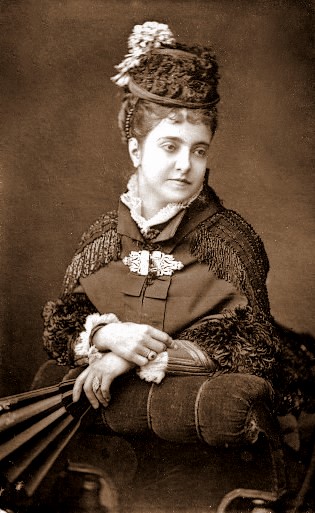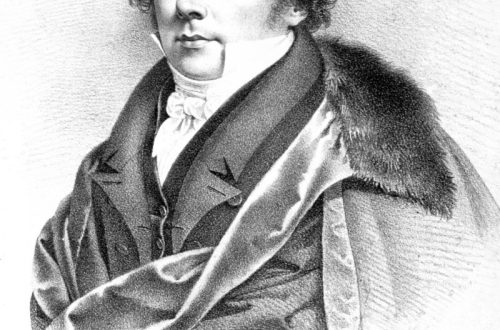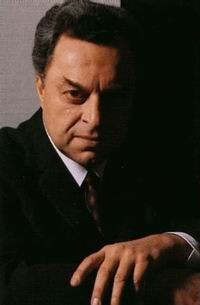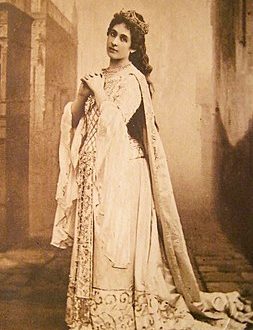
Adelina Patti (Adelina Patti) |
Adelina patti
Patti is one of the greatest representatives of the virtuoso direction. At the same time, she was also a talented actress, although her creative range was limited mainly to comedic and lyrical roles. One prominent critic said of Patti: “She has a big, very fresh voice, remarkable for the charm and force of impulses, a voice without tears, but full of smiles.”
“In opera works based on dramatic plots, Patti was more attracted to languid sadness, tenderness, penetrating lyricism than strong and fiery passions,” notes V.V. Timokhin. – In the roles of Amina, Lucia, Linda, the artist delighted her contemporaries primarily with genuine simplicity, sincerity, artistic tact – qualities inherent in her comic roles …
Contemporaries found the singer’s voice, although not particularly powerful, unique in its softness, freshness, flexibility and brilliance, and the beauty of the timbre literally hypnotized the listeners. Patty had access to a range from “si” of a small octave to “fa” of the third. In her best years, she never had to “sing” at a performance or at a concert in order to gradually get into shape – from the very first phrases she appeared fully armed with her art. The fullness of sound and impeccable purity of intonation have always been inherent in the artist’s singing, and the last quality was lost only when she resorted to the forced sound of her voice in dramatic episodes. Patti’s phenomenal technique, the extraordinary ease with which the singer performed intricate fiorities (especially trills and ascending chromatic scales), aroused universal admiration.
Indeed, the fate of Adeline Patti was determined at birth. The fact is that she was born (February 19, 1843) right in the building of the Madrid Opera. Adeline’s mother sang the title role in “Norma” here just a few hours before the birth! Adeline’s father, Salvatore Patti, was also a singer.
After the birth of the girl – already the fourth child, the singer’s voice lost its best qualities, and soon she left the stage. And in 1848, the Patty family went overseas to seek their fortune and settled in New York.
Adeline has been interested in opera since childhood. Often, together with her parents, she visited the New York theater, where many famous singers of that time performed.
Talking about Patti’s childhood, her biographer Theodore de Grave cites a curious episode: “Returning home one day after the performance of Norma, during which the performers were showered with applause and flowers, Adeline took advantage of the minute when the family was busy with dinner, and quietly slipped into her mother’s room. Climbing in, the girl—she was barely six years old at the time—wrapped a blanket around herself, put a wreath on her head—the recollection of some triumph of her mother—and, posing importantly in front of the mirror, with the air of a debutante deeply convinced of the effect she produced, sang the introductory aria Norma. When the last note of the child’s voice froze in the air, she, passing into the role of listeners, rewarded herself with intensified applause, removed the wreath from her head and threw it in front of her, so that, raising it, she would have the opportunity to make the most graceful of bows, which the called artist ever or thanked her audience.
Adeline’s unconditional talent allowed her, after a short study with her brother Ettore in 1850, at the age of seven (!), To perform on stage. New York music lovers started talking about the young vocalist, who sings classical arias with an incomprehensible skill for her age.
Parents understood how dangerous such early performances were for their daughter’s voice, but the need left no other way out. Adeline’s new concerts in Washington, Philadelphia, Boston, New Orleans and other American cities are a huge success. She also traveled to Cuba and the Antilles. For four years, the young artist performed over three hundred times!
In 1855, Adeline, having completely stopped concert performances, took up the study of the Italian repertoire with Strakosh, her elder sister’s husband. He was her only, apart from his brother, vocal teacher. Together with Strakosh, she prepared nineteen games. At the same time, Adeline studied piano with her sister Carlotta.
“November 24, 1859 was a significant date in the history of performing arts,” writes V.V. Timokhin. – On this day, the audience of the New York Academy of Music was present at the birth of a new outstanding opera singer: Adeline Patti made her debut here in Donizetti’s Lucia di Lammermoor. The rare beauty of the voice and the exceptional technique of the artist caused a noisy applause from the public. In the first season, she sings with great success in fourteen more operas and again tours American cities, this time with the prominent Norwegian violinist Ole Bull. But Patty didn’t think the fame she had gained in the New World was enough; the young Girl rushed to Europe to fight there for the right to be called the first singer of her time.
On May 14, 1861, she appears before the Londoners, who filled the Covent Garden theater to overflowing, in the role of Amina (Bellini’s La sonnambula) and is honored with a triumph that had previously fallen to the lot, perhaps, only of Pasta and Malibran. In the future, the singer introduced local music lovers with her interpretation of the parts of Rosina (The Barber of Seville), Lucia (Lucia di Lammermoor), Violetta (La Traviata), Zerlina (Don Giovanni), Marta (Martha Flotov) , who immediately nominated her to the ranks of world-famous artists.
Although subsequently Patti repeatedly traveled to many countries in Europe and America, it was England that she devoted most of her life to (finally settling there from the end of the 90s). Suffice it to say that for twenty-three years (1861-1884) with her participation, performances were regularly held at Covent Garden. No other theater has seen Patti on stage for such a long time.”
In 1862, Patti performed in Madrid and Paris. Adeline immediately became the favorite of French listeners. Critic Paolo Scyudo, dwelling on her performance of the role of Rosina in The Barber of Seville, noted: “The fascinating siren blinded Mario, deafened him with the click of her castanets. Of course, under such conditions, neither Mario nor anyone else is out of the question; all of them were obscured – involuntarily, only Adeline Patty is mentioned, about her grace, youth, wonderful voice, amazing instinct, selfless prowess and, finally … about her mine of a spoiled child, for whom it would be far from useless to listen to the voice of impartial judges, without which she is unlikely to reach the apogee of her art. Above all, she must beware of the enthusiastic praises with which her cheap critics are ready to bombard her – those natural, albeit the most good-natured enemies of public taste. The praise of such critics is worse than their censure, but Patti is such a sensitive artist that, no doubt, it will not be difficult for her to find a voice of restrained and impartiality among the cheering crowd, the voice of a man who sacrifices everything to truth and is ready to express it always with full faith in the impossibility of intimidating. undeniable talent.”
The next city where Patty was waiting for success was St. Petersburg. On January 2, 1869, the singer sang in La Sonnambula, and then there were performances in Lucia di Lammermoor, The Barber of Seville, Linda di Chamouni, L’elisir d’amore and Donizetti’s Don Pasquale. With each performance, Adeline’s fame grew. By the end of the season, the public recognized her as a unique, inimitable artist.
P.I. Tchaikovsky wrote in one of his critical articles: “… Mrs. Patti, in all fairness, has been ranked first among all vocal celebrities for many years in a row. Wonderful in sound, great in stretch and power voice, impeccable purity and lightness in coloratura, extraordinary conscientiousness and artistic honesty with which she performs each of her parts, grace, warmth, elegance – all this is combined in this amazing artist in due proportion and in harmonic proportion. This is one of those few chosen ones who can be ranked among the first-class of first-class artistic personalities.
For nine years, the singer constantly came to the capital of Russia. Patty’s performances have garnered mixed reviews from critics. The Petersburg musical society was divided into two camps: Adeline’s fans – “pattists” and supporters of another famous singer, Nilson – “Nilsonists”.
Perhaps the most objective assessment of Patty’s performance skills was given by Laroche: “She captivates the combination of an extraordinary voice with an extraordinary mastery of vocalization. The voice is really quite exceptional: this sonority of high notes, this huge volume of the upper register and at the same time this strength, this almost mezzo-soprano density of the lower register, this light, open timbre, at the same time light and rounded, all these qualities together constitute something phenomenal. So much has been said about the skill with which Patty does scales, trills, and so on, that I find nothing to add here; I will only note that perhaps the greatest praise is worthy of the sense of proportion with which she performs only the difficulties that are accessible to the voice … Her expression – in everything that is easy, playful and graceful – is impeccable, although even in these things I did not find than the fullness of life that is sometimes found among singers with less great vocal means … Undoubtedly, her sphere is limited to a light and virtuoso genre, and her cult as the first singer of our days proves only that the public appreciates this particular genre above all else and for it ready to give everything else.
On February 1, 1877, the artist’s benefit performance took place at Rigoletto. No one thought then that in the image of Gilda she would appear before the people of St. Petersburg for the last time. On the eve of La Traviata, the artist caught a cold, and besides, she suddenly had to replace the main performer of Alfred’s part with an understudy. The singer’s husband, the Marquis de Caux, demanded that she cancel the performance. Patti, after much hesitation, decided to sing. In the first intermission, she asked her husband: “Still, it seems that I sing well today, in spite of everything?” “Yes,” replied the marquis, “but, how can I put it more diplomatically, I used to hear you in better shape …”
This answer seemed to the singer not diplomatic enough. Angered, she tore off her wig and threw it at her husband, driving him out of the dressing room. Then, slightly recovering, the singer nevertheless brought the performance to the end and had, as usual, a resounding success. But she could not forgive her husband for his frankness: soon her lawyer in Paris handed him a demand for a divorce. This scene with her husband received wide publicity, and the singer left Russia for a long time.
Meanwhile, Patti continued to perform around the world for another twenty years. After her success at La Scala, Verdi wrote in one of his letters: “So, Patti was a great success! It had to be so!.. When I heard her for the first time (she was then 18 years old) in London, I was stunned not only by the wonderful performance, but also by some features in her game, in which even then a great actress appeared … that very moment… I defined her as an extraordinary singer and actress. Like an exception in art.”
Patti ended her stage career in 1897 in Monte Carlo with performances in the operas Lucia di Lammermoor and La Traviata. Since that time, the artist has devoted herself exclusively to concert activity. In 1904 she again visited St. Petersburg and sang with great success.
Patti said goodbye to the public forever on October 20, 1914 in London’s Albert Hall. She was then seventy years of age. And although his voice lost strength and freshness, his timbre remained just as pleasant.
Patti spent the last years of her life at her picturesquely located Craig-ay-Nose castle in Wells, where she died on September 27, 1919 (buried in the Père Lachaise cemetery in Paris).





